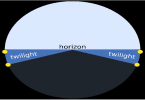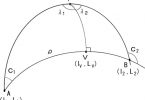The gyrospin axis can be made meridian-seeking (maintaining the spin axis parallel to the earth’s spin axis) by the use of a pendulum acting under the influence of earth gravity. The pendulum causes a force to act upon the gyro assembly causing it to precess. Precession, the second fundamental property of a gyroscope, enables the instrument to become north-seeking. As the pendulum swings towards the centre of gravity, a downward force is applied to the wheel axle, which causes horizontal precession to occur. This gravitational force acting downward on the spinner axle causes the compass to precess horizontally and maintain the axle pointing towards true north.
The two main ways of achieving precessional action due to gravity are to make the gyro spin axis either bottom or top heavy.
Bottom-heavy control and a clockwise rotating gyro spinner are used by some manufacturers, whereas others favour a Top-heavy control system with an anticlockwise rotating spinner.






